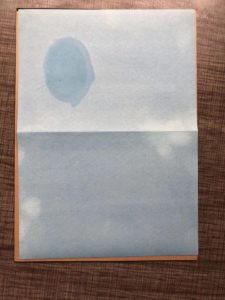What?
Sunscreens contain diverse active ingredients. Some use the inert inorganic mineral pigment, such as zinc oxide and titanium dioxide, primarily to reflect or scatter UV radiation. Others use organic chemicals or a mixture because chemicals can absorb UV rays. For instance, sunscreens also contain carbon-containing molecules that absorb light, such as oxybenzone, octinoxate, octisalate and avobenzone.
The Scientific Committee on Consumer Products (SCCP) has reviewed 27 UV filters approved for Cosmetic Directive, each processes a designation, by which they should be declared on product packaging.
Each sunscreen product has a sunscreen products factor (SPF). It is misleading to interpret SPF as the strength of protection. In fact, SPF refers to the time for the UVB rays to redden the skin with the product compared to that without product. For instance, 15 SPF means using this sunscreen will take 15 times longer for the skin to burn than without using it.
How?
Most sunscreen products work by blocking, absorbing, reflecting and scattering UV rays through physical and chemical approaches. Physical method uses particles like titanium dioxide or zinc oxide mentioned above to reflect UV rays away from skins. Meanwhile, many complicated ingredients have chemical reaction with radiation as they contact, absorbing the UV rays, prevent the radiation harming the skins.
Specifically, sunscreens can combat with two types of damaging UV rays: UVA and UVB. Recent researches show that both UVB and UVA radiation will cause sunburn and skin cancer, while UVA rays will also deeply penetrate the skins and cause faster aging, wrinkling and eye damaging.
However, most sunscreen products on the market only block UVB rays while overlook the damage caused by UVA rays. Focusing on efficient UVA protection has a significant prospect in the future.
Safety?
Besides SCCP inspections, ingredients used in sunscreen products also must be approved by the Food and Drug Administration (FDA). The FDA has reviewed 17 ingredients that can be used in UV products, including oxybenzone, titanium dioxide and zinc oxide mentioned before.
To guarantee the safety of ingredients, FDA conducts extensive inspections on the ingredients and moreover, regulates the safety and effectiveness of the ingredients until reaching the best performance. For instance, FDA has approved the use of zinc oxide in over-the-counter skin protectants and sunscreen products at concentrations up to 25 percent; active ingredients in sunscreen such as titanium dioxide protect our skin form the harmful UV rays.
Experiment!
Now let’s do something interesting using the nature print paper. The nature print paper will become very pale blue after exposure to the sunlight. We can use it to test the effectiveness of UV product by comparing the color.
Step 1: Take one piece of Nature print paper and put it on a piece of corrugated cardboard for support.
Step 2: Smear some sunscreen on part of the paper (the small circle). I used the Shiseido UV product with SPF 50, PF+++.

Step 3: Expose the paper under sunlight until the blue paper turns very pale blue.
Step 4: Check the resulted paper.

We can discover that the whole paper became light blue, except the circle with sunscreen barely changed after 2 hours of exposure. We can see that the sunscreen products do have intensive effect and we can surely believe that sunscreen products can protect our skins against the harmful UV light.
Binks, Bernard P., et al. “How the sun protection factor (SPF) of sunscreen films change during solar irradiation.” Journal of Photochemistry and Photobiology A: Chemistry 333 (2017): 186-199.
Holman, Dawn M., et al. “Patterns of sunscreen use on the face and other exposed skin among US adults.” Journal of the American Academy of Dermatology 73.1 (2015): 83-92.
Saini, Ritu, and Andrea Szemplinski. “How to choose the right sunscreen for your skin type.” (2016).
Wahie, S., J. J. Lloyd, and P. M. Farr. “Sunscreen ingredients and labelling: a survey of products available in the UK.” Clinical and Experimental Dermatology: Clinical dermatology 32.4 (2007): 359-364.
Gasparro, Francis P., Mark Mitchnick, and J. Frank Nash. “A review of sunscreen safety and efficacy.” Photochemistry and photobiology 68.3 (1998): 243-256.


